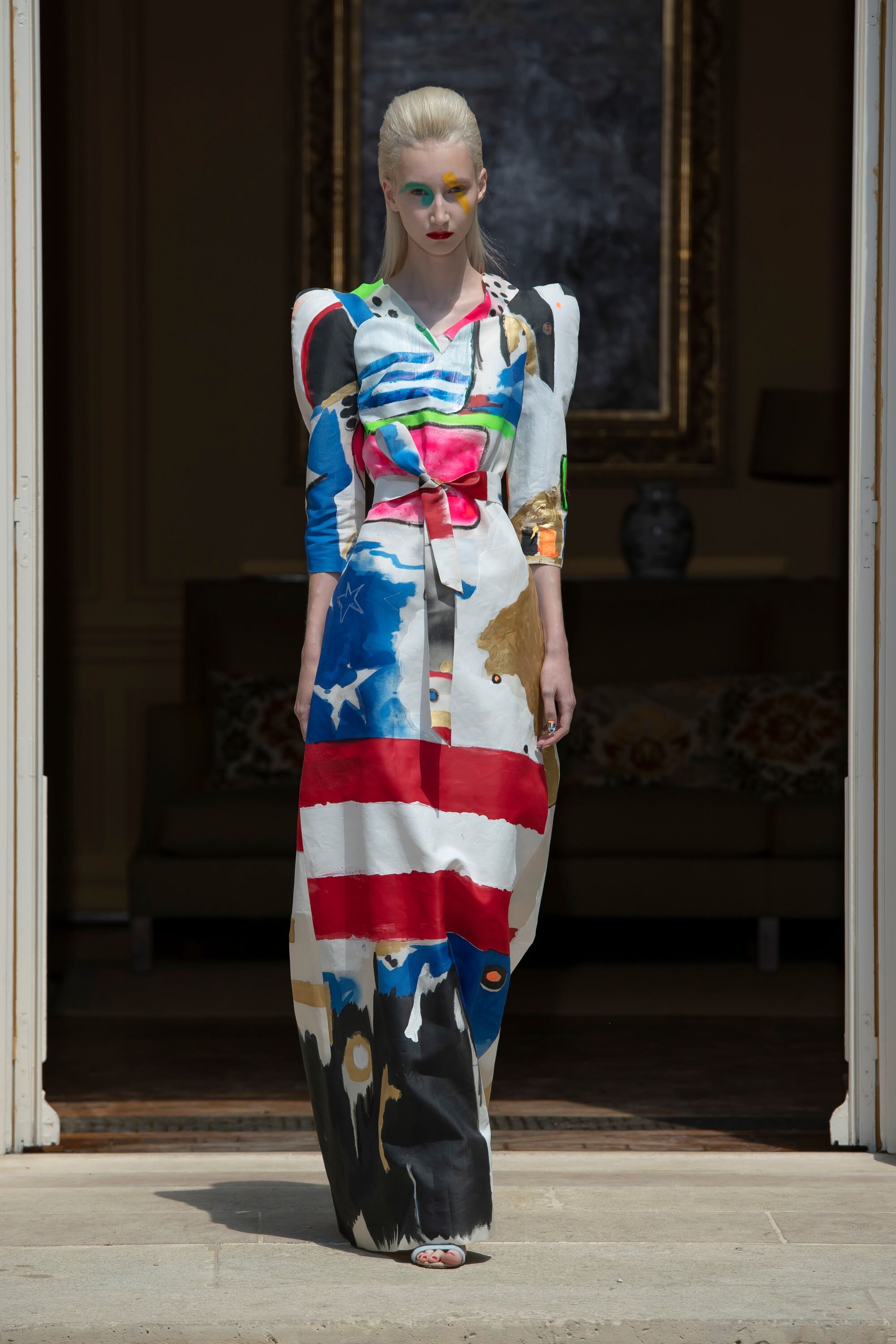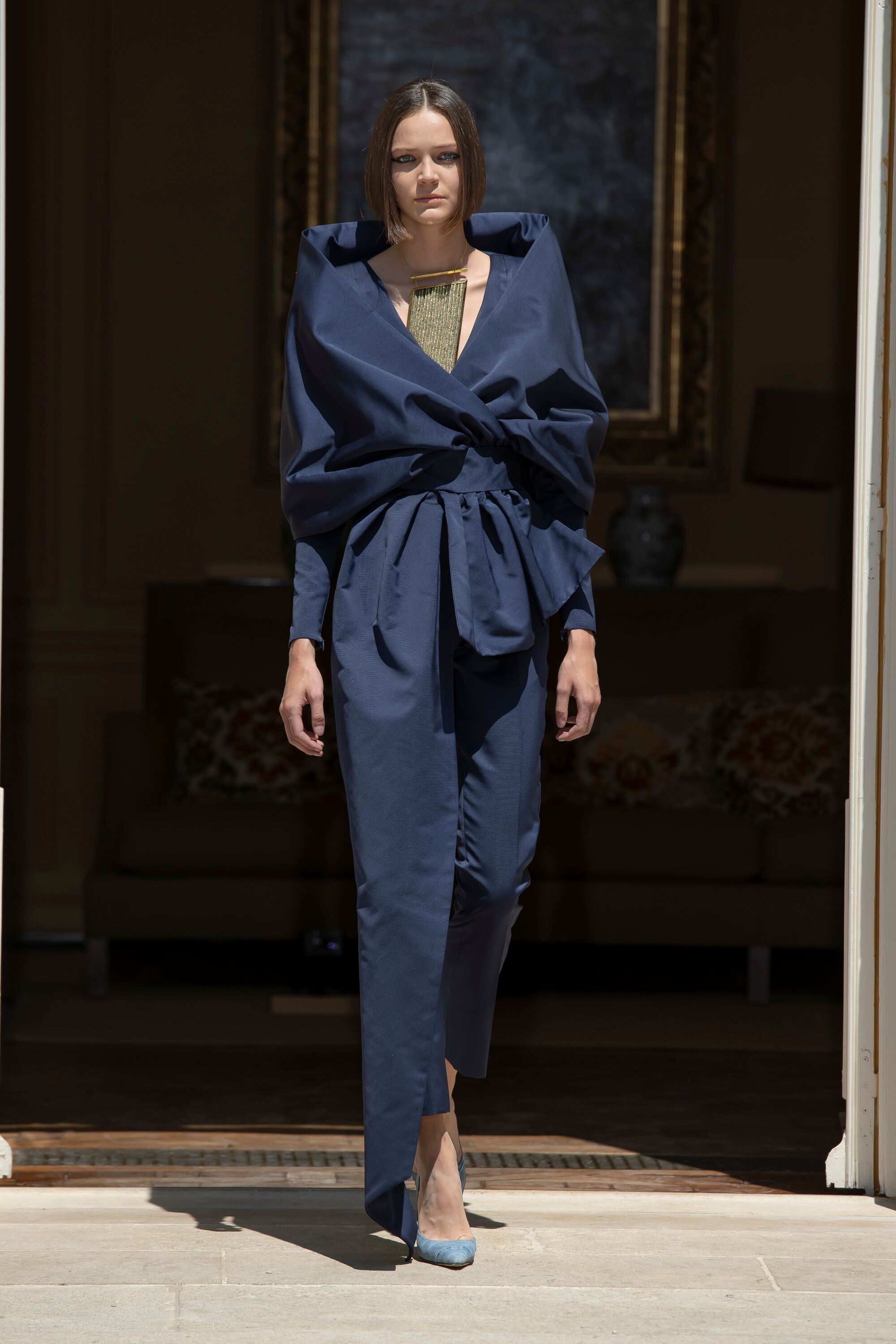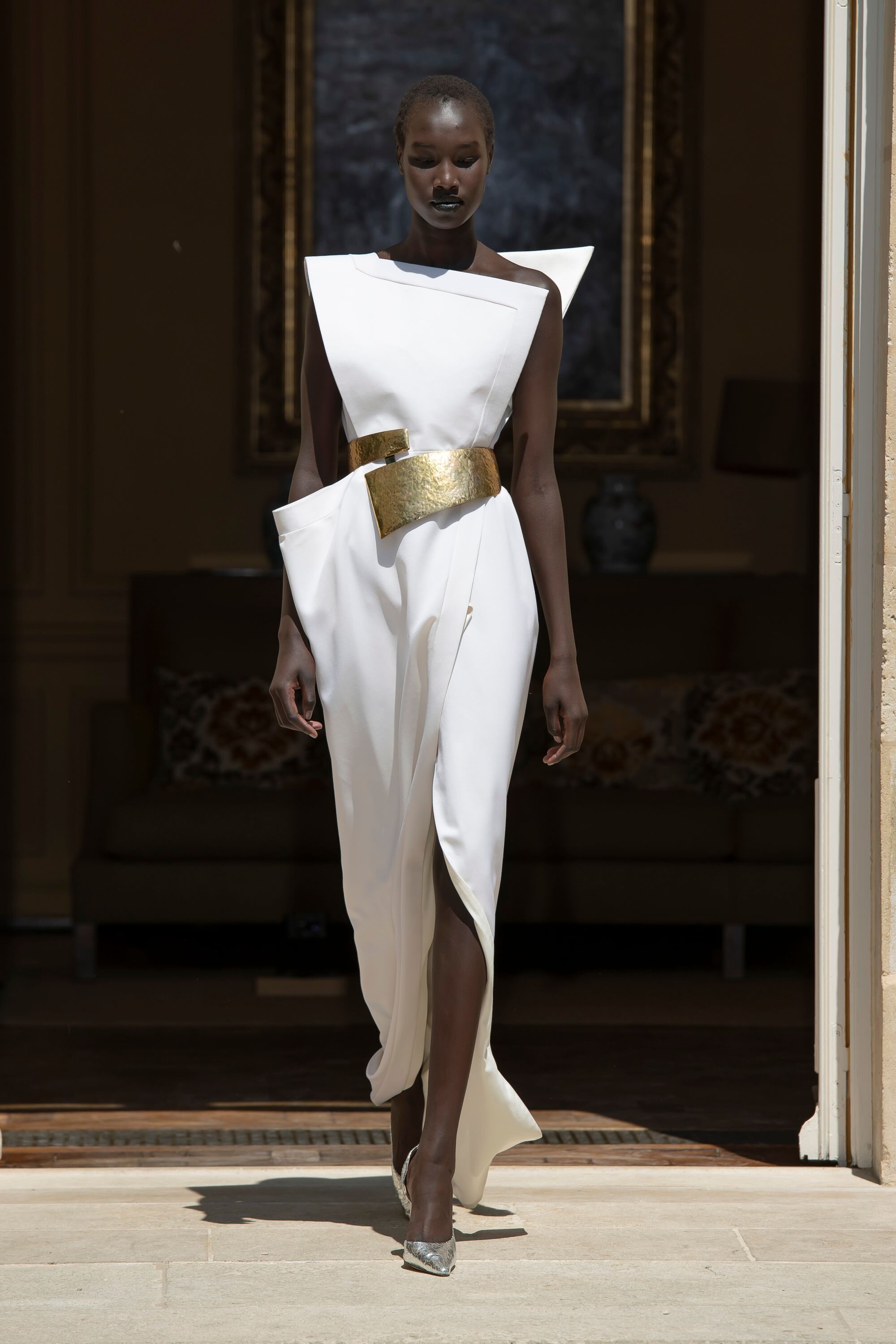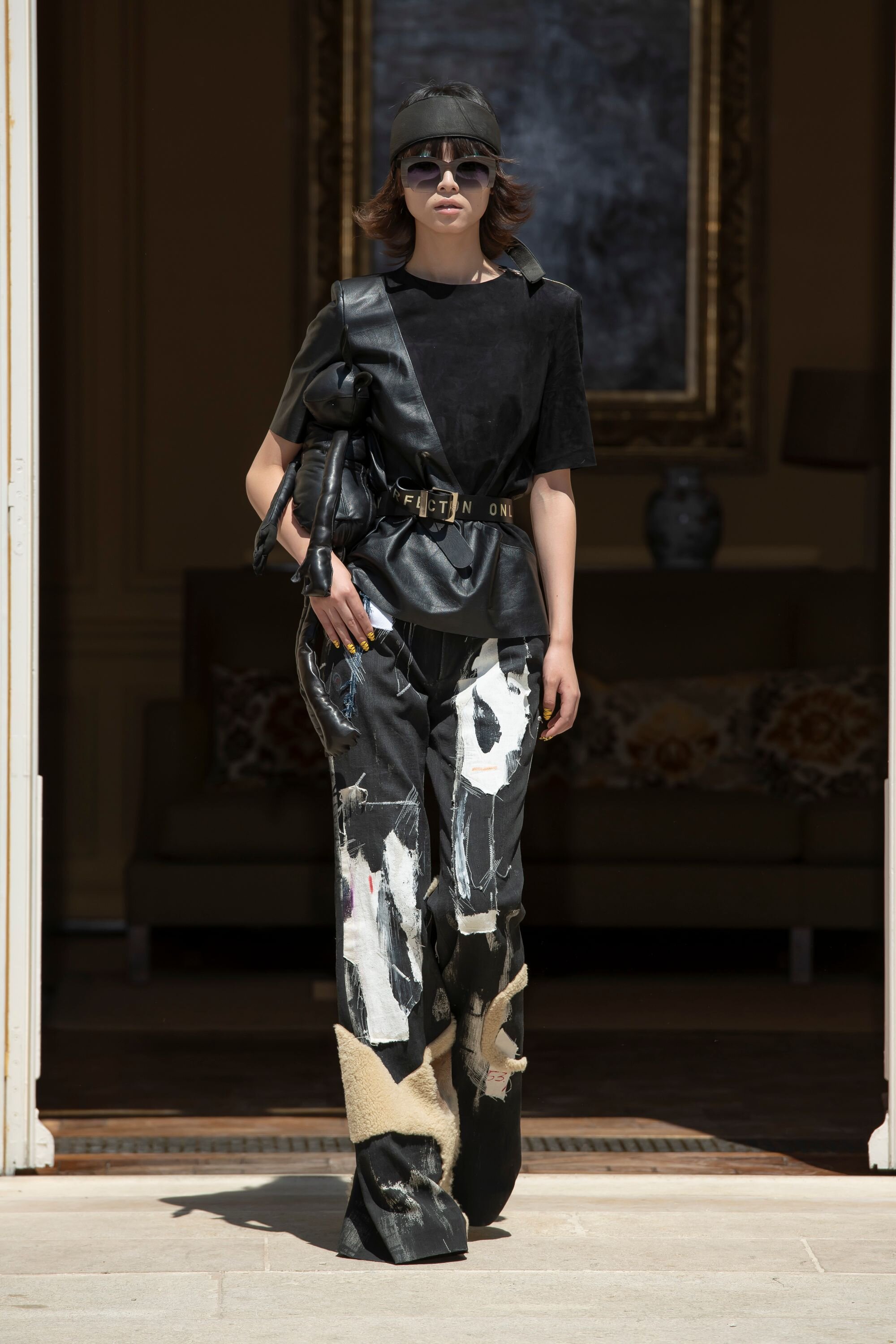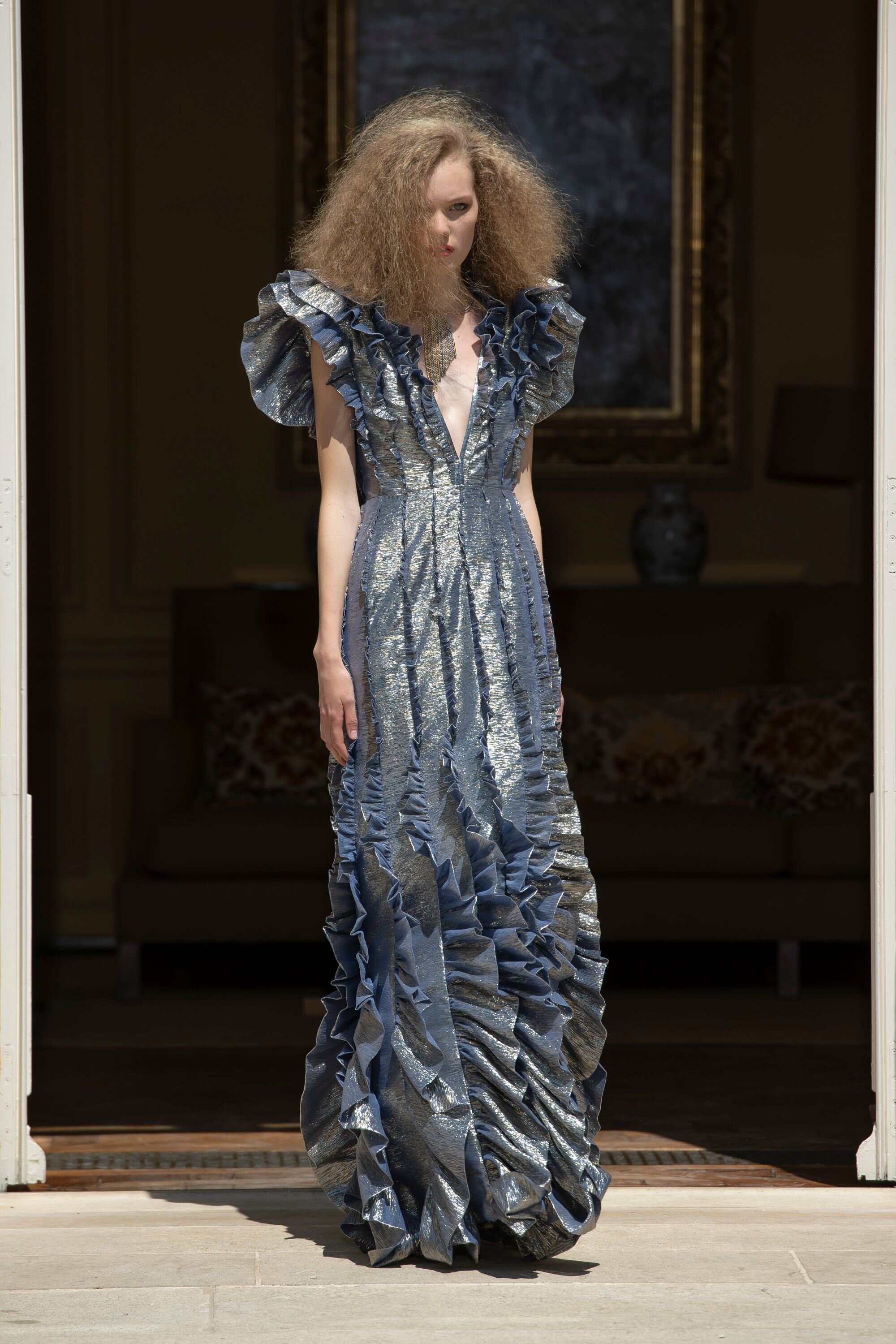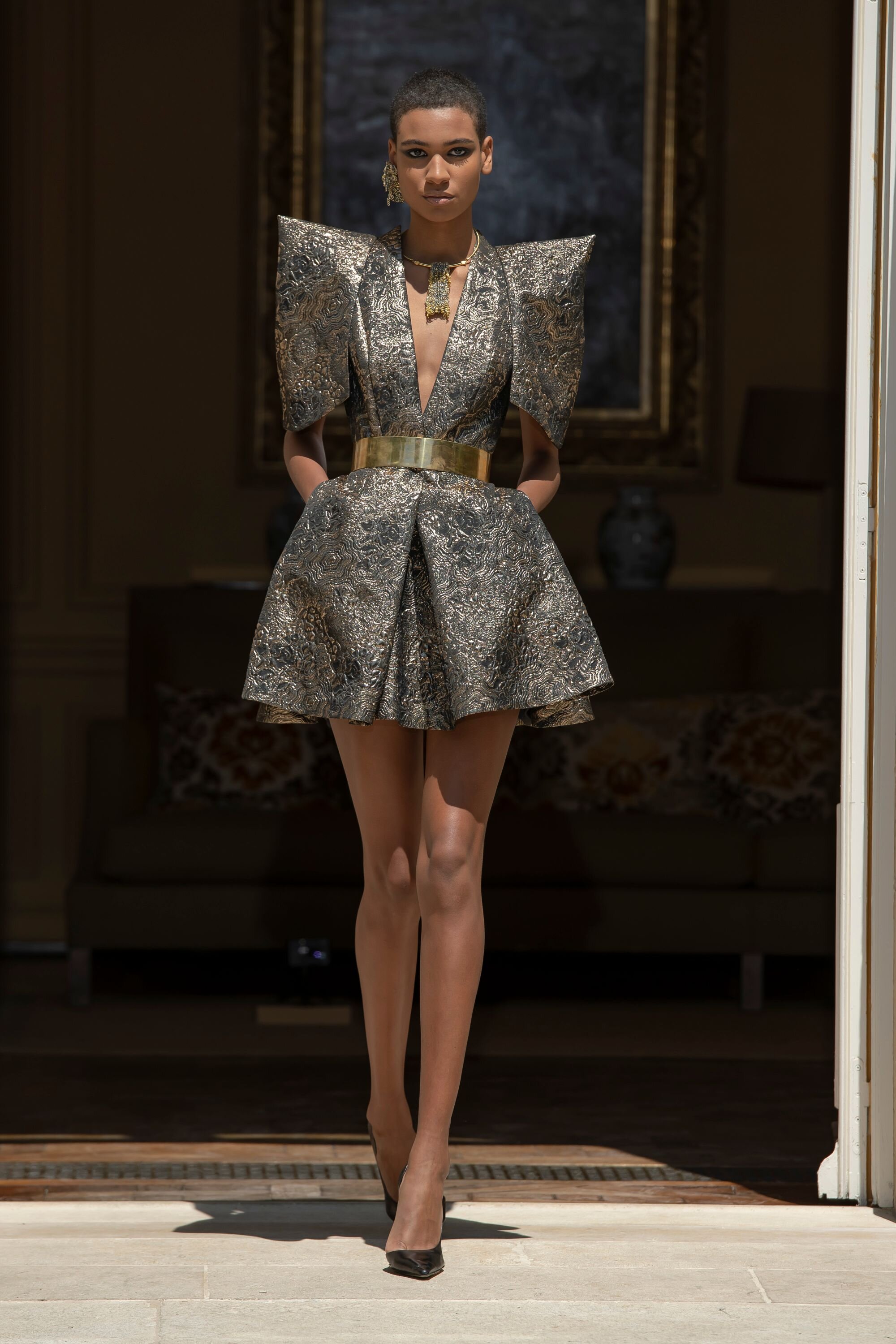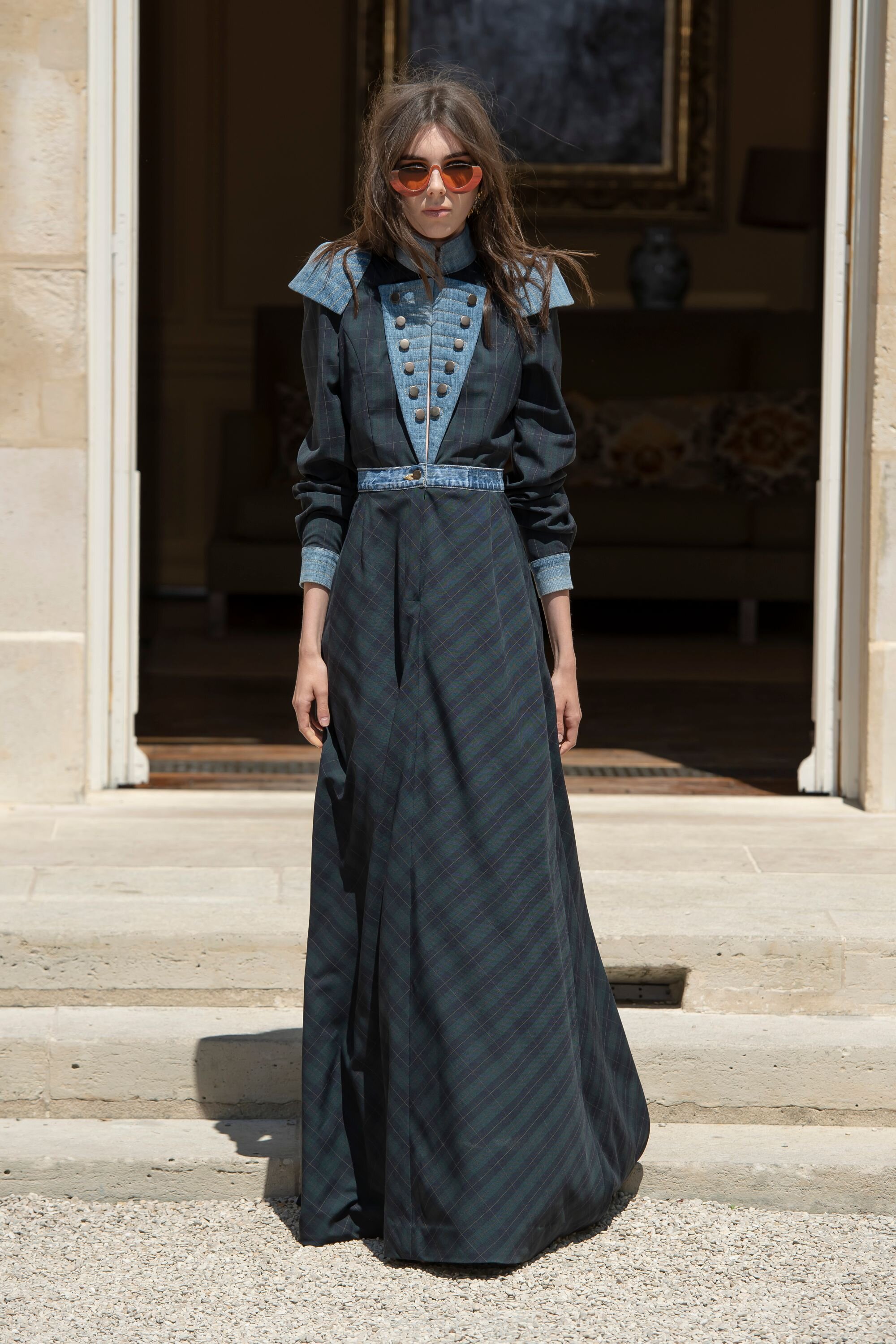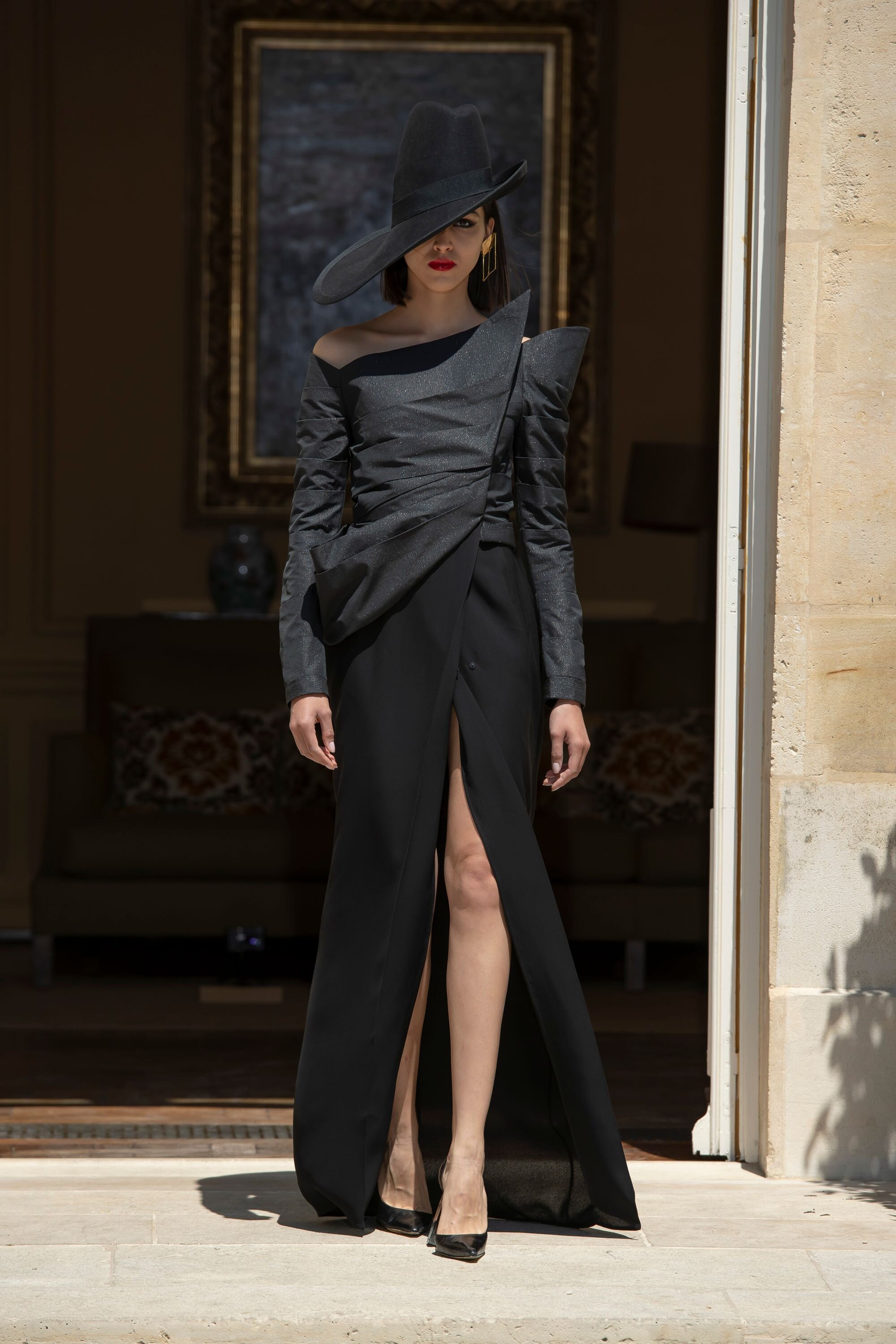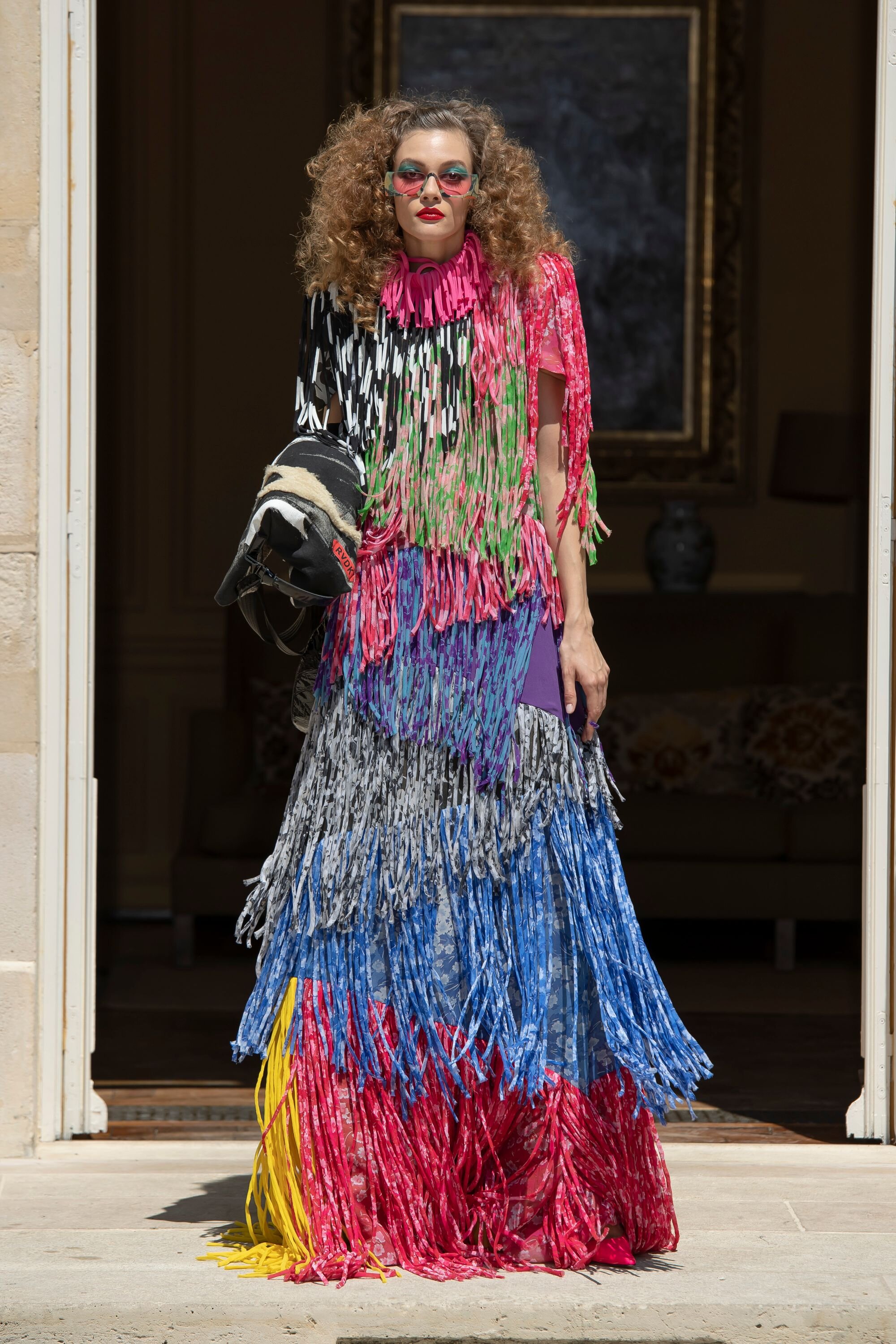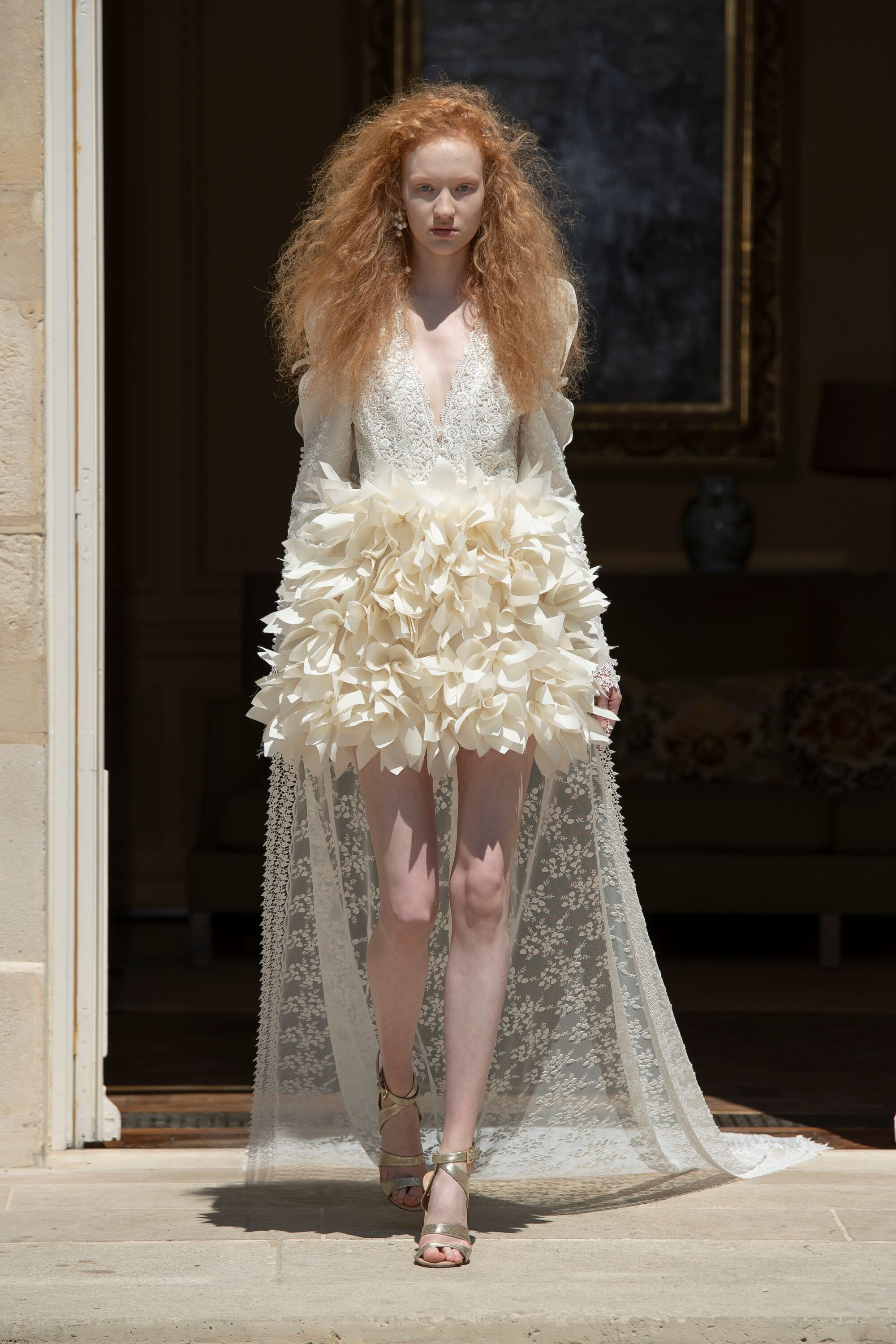Ronald van der Kemp Creates Sustainable Couture One Piece at a Time
Sustainability is the current buzzword in fashion, but for Ronald van der Kemp it is truly embedded in his brand’s ethos. So much so that the Dutch couturier who has rapidly made a name for himself with glamorous upcycled outfits, recently took the difficult business decision to stop working with all retailers including Net-a-Porter and Bergdorf Goodman.
“We had to cut a big part of our business to keep to our ‘DNA,’ because we really want to stick to our principles. Instead we’re going to try to work directly with private clients, reach out to women who want something very exclusive and special, something that no one else has,” he explains.
Van der Kemp readily admits that running a business on a fully sustainable basis is extremely difficult: “As a couture house, sometimes you have to fly somewhere to do a fitting, that’s the nature of the business. Travelling is something I don’t have an answer for. You have to travel to spread the message. Al Gore had to do the same.”
But the Amsterdam-based designer is on a mission to show the world it is possible to create glamorous and sexy outfits by repurposing disregarded material, vintage couture fabrics, leftover stock and offcuts, and combining these with creative flair. RVDK, the Maison he founded in 2014, eschews the fashion system’s wasteful ways by offering garments that aren’t tied to a particular fashion season and ensures they have “a soul,” as the designer puts it, expressing a women’s personality and sense of individuality
“We work with what we find and we work with what we have,” van der Kemp remarks during Paris Couture Week where he unveiled his latest “wardrobe”– the designer doesn’t like to use the word collection, because each garment is created independently of each other, fully dependent on the fabrics available at the time.
“We are on a mission to reinvent the notion of a couture house for the future; a couture house as a movement,” he says.
Van der Kemp, who was recently awarded Holland’s highest accolade in the fashion industry, the Grand Seigneur, spent over 25 years in the high-end fashion industry, working as a designer and creative director for the like of Bill Blass, Barneys (where he started the retailer’s own private label programme), Celine, J. Mendel, and Escada, before taking the plunge and starting his own semi-couture label, RVDK.
“Looking at the industry and how we over produce, I really thought ‘this is out of control’ and I started to get really worried. I could see things were not going in the right direction, but instead you had more and more waste; and also as a designer, I started to become aware I could no longer really pay full attention to my collections, because things were going so fast. I couldn’t spend the time and make things as beautiful as I used to,” he explains.
“I also felt that if I really wanted to do something, I needed to do it now, otherwise it would be too late. I felt I was at an age (48, at the time) where I really needed to make a change for myself if I wanted to mean something in this world; and that’s why I started my company,” he says. He notes that he knew exactly the direction he wanted to take when he saw some old couture pieces, which had once belonged to the famous socialite Nan Kempner, in a luxury vintage store in New York.
“I thought these are the kind of clothes I want to make, not those you see in the stores, because even though they are perfectly made in high-end factories, they (the clothes in stores) don’t have the love and the soul of real fashion,” he recalls. “I wanted to go back to the way I used to do fashion when I started at Bill Blass, making them as perfect as possible for your clients. After all the wastage I’d seen, I wanted to do things differently, and also give that vintage feeling that I love so much.”
The designer showed his first ‘wardrobe’ to a select group of fashion editors, and the response was very good, van der kemp says, recalling proudly that most didn’t even know the clothes had been made with repurposed fabrics: “At the beginning I didn’t want to publicise this aspect. I didn’t want to talk about sustainability because I felt I would be pigeon-holed. I just wanted to seduce them with the clothes. I wanted to prove to the world that sustainability can be glamorous and sexy.”
For his latest ‘wardrobe,’ presented in Paris in July, the designer continues to elevate by-products and discarded materials. In previous presentations he had created a floral dress with leftover lampshade gauze and transformed an antique silk bedcover into a cape; this time, 98% of the collection was made through re-appropriating fabrics and materials. This included a “No-fake-fur-coat” using vintage silk floral tubes stuffed with recycled down, as a statement against using fake fur.
Numerous stars have been embracing the designer’s creations on the red carpet – from Emma Watson, Katy Perry and Celine Dion to Yao Chen and Wan Quian – though many are unaware of his recycling ethos.
Hollywood stylist Rob Zangardi, who recently dressed Lily Collins for the Tolkien premiere in Los Angeles in a top made of upcycled denim from vintage bleached jeans and a skirt that was a patchwork skirt made of leftover material from a couture mill, admits he was unaware of the recycling nature when he and his business partner Mariel Haenn picked them up. “But now knowing makes me love him even more. He has such a rock and roll take on fashion. I love his whole vibe. It’s really hard for us to find cool clothes for rock stars. He’s one of the few.”
RVDK sources its luxury fabrics from leftover stocks from other luxury brands, and from vintage stores. Illustrating this, van der Kemp notes, “We bought the archive of a factory that was going out of business. Just small cuts of fabrics,” adding that sometimes rejected fabrics by others will have a small fault, which he’s happy to hide creatively for his design.
“I feel we can show how things can be done differently. Ultimately, couture has a function to inspire, and I hope every girl out there can look at their closet and feel they can create a new look out of something vintage, something they already have in their closet.”
A version of this article first appeared in A: The First Of magazine (September edition)

